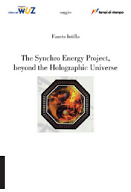Source: Stanford Edu
-----------------------------
In the 1960s, Ricciardi and Umezawa (1967) suggested to utilize the formalism of quantum field theory to describe brain states, with particular emphasis on memory. The basic idea is to conceive of memory states in terms of states of many-particle systems, as inequivalent representations of vacuum states of quantum fields.[11] This proposal has gone through several refinements (e.g., Stuartet al. 1978, 1979; Jibu and Yasue 1995). Major recent progress has been achieved by including effects of dissipation, chaos, and quantum noise (Vitiello 1995; Pessa and Vitiello 2003). For readable nontechnical accounts of the approach in its present form, embedded in quantum field theory as of today, see Vitiello (2001, 2002).Quantum field theory (see the entry on quantum field theory) yields infinitely many representations of the commutation relations, which are inequivalent to the Schrödinger representation of standard quantum mechanics. Such inequivalent representations can be generated by spontaneous symmetry breaking (see the entry on symmetry and symmetry breaking), occurring when the ground state (or the vacuum state) of a system is not invariant under the full group of transformations providing the conservation laws for the system. If symmetry breaks down, collective modes are generated (so-called Nambu-Goldstone boson modes), which propagate over the system and introduce long-range correlations in it.
These correlations are responsible for the emergence of ordered patterns. Unlike in thermal systems, a large number of bosons can be condensed in an ordered state in a highly stable fashion. Roughly speaking, this provides a quantum field theoretical derivation of ordered states in many-body systems described in terms of statistical physics. In the proposal by Umezawa these dynamically ordered states represent coherent activity in neuronal assemblies.
The activation of a neuronal assembly is necessary to make the encoded content consciously accessible. This activation is considered to be initiated by external stimuli. Unless the assembly is activated, its content remains unconscious, unaccessed memory. According to Umezawa, coherent neuronal assemblies correlated to such memory states are regarded as vacuum states; their activation leads to excited states with a finite lifetime and enables a conscious recollection of the content encoded in the vacuum (ground) state. The stability of such states and the role of external stimuli have been investigated in detail by Stuart et al. (1978, 1979).
A decisive further step in developing the approach has been achieved by taking dissipation into account. Dissipation is possible when the interaction of a system with its environment is considered. Vitiello (1995) describes how the system-environment interaction causes a doubling of the collective modes of the system in its environment. This yields infinitely many differently coded vacuum states, offering the possibility of many memory contents without overprinting. Moreover, dissipation leads to finite lifetimes of the vacuum states, thus representing temporally limited rather than unlimited memory (Alfinito and Vitiello 2000; Alfinito et al.2001). Finally, dissipation generates a genuine arrow of time for the system, and its interaction with the environment induces entanglement. In a recent contribution, Pessa and Vitiello (2003) have addressed additional effects of chaos and quantum noise.
The majority of presentations of this approach donot consistently distinguish between mental states and material states. This suggests reducibility of mental activity to brain activity, within scenario (A) of Sec. 2, as an underlying assumption. In this sense, Umezawa's proposal addresses the brain as a many-particle system as a whole, where the“particles” are more or less neurons. In the language of Section 3.1, this refers to the level of neuronal assemblies, which has the benefit that this is the level whichdirectly correlates with mental activity. Another merit of the quantum field theory approach is that it avoids the restrictions of standard quantum mechanics in a formally sound way.
Conceptually, however, it contains ambiguities demanding clarification, e.g., concerning the continuous confusion of mental and material states (and their properties). If mental states were the primary objects of reference, the quantum field theoretical treatment would be metaphorical in the sense of Section 4.1. That this is not the case has recently been clarified by Freeman and Vitiello (2008): the model “describes the brain, not mental states.”
For a description of brain states, it remains to be specified how this is backed up by the results of contemporary neurobiology. In recent publications (see, e.g., Freeman and Vitiello 2006, 2008), potential neurobiologically relevant observables such as electric and magnetic field amplitudes or neurotransmitter concentration have been discussed. These observables are purely classical, so that neurons, glia cells, “and other physiological units are not quantum objects in the many-body model of brain” (Freeman and Vitiello 2008).
This leads to the conclusion that the application of quantum field theory in the model serves the purpose of motivating that and why classical behavior emerges at the level of brain activity considered. The relevant brains states themselves are decidedly viewed as classical states. Similar to a classical thermodynamical description arising from quantum statistical mechanics, the idea is to identify different regimes of stable behavior (phases, attractors) and transitions between them. This way, quantum field theory provides formal elements from which a standard classical description of brain activity can be inferred, and this is its main role in the model.

























